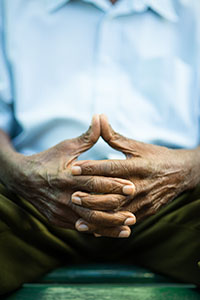
Every year, an estimated 2.1 million older Americans are victims of elder abuse, neglect, or exploitation; experts estimate that for every case of elder abuse or neglect reported, as many as five cases go unreported.
Below is a sampling of findings from the National Center on Elder Abuse (NCEA) that show what is known about the incidence and prevalence of elder abuse and neglect:
-
The most recent major studies on incidence reported that 7.6%–10% of study participants experienced abuse in the prior year. The study that found an incidence of 1 in 10 adults experiencing abuse did not include financial abuse.
-
Available data from state Adult Protective Services (APS) agencies show an increasing trend in the reporting of elder abuse.
-
Despite the accessibility of APS in all 50 states (whose programs are quite different), as well as mandatory reporting laws for elder abuse in most states, an overwhelming number of cases of abuse, neglect, and exploitation go undetected and untreated each year.
-
One study estimated that only 1 in 14 cases of elder abuse ever comes to the attention of authorities. The New York State Elder Abuse Prevalence Study found that for every case known to programs and agencies, 24 were unknown.
-
Major financial exploitation was self-reported at a rate of 41 per 1,000 surveyed, which was higher than self-reported rates of emotional, physical, and sexual abuse or neglect.
Abuse of Individuals with Disabilities
Approximately 14 million seniors aged 65 and over, and 19 million adults aged 18 to 64, have a disability. Unfortunately, some of these vulnerable individuals are abused by family members, service providers, care assistants and others. This abuse places the victim’s health, safety, emotional wellbeing, and ability to engage in daily life activities at risk.
Below is a sampling of research findings from the NCEA relating to abuse of adults with disabilities:
-
Institutionalized adult women with disabilities reported a 33% prevalence of having ever experienced interpersonal violence (IPV) versus 21% for institutionalized adult women without disabilities.
-
When considering lifetime abuse by any perpetrator, a sample of 200 adult women with disabilities indicated that 67% had experienced physical abuse and 53% had experienced sexual abuse.
-
In a study of 342 adult men, 55% of men experienced physical abuse by any person after becoming disabled. Nearly 12% of these men stated they experienced physical abuse by a personal assistance service provider over their lifetime.
-
In a comprehensive review of literature published from 2000–2010, lifetime prevalence of any type of IPV against adult women with disabilities was found to be 26–90%. Lifetime prevalence of IPV against adult men with disabilities was found to be 28.7–86.7%. It was concluded that, over the course of their lives, IPV occurs at disproportionate and elevated rates among men and women with disabilities
The Elder Justice Act
Signed into law in March 2013 as part of the Affordable Care Act, the Elder Justice Act was the first piece of federal legislation passed to authorize a specific source of federal funds to address elder abuse, neglect, and exploitation.
Elder Justice Innovation Grants
Although the EJA proposed $25 million to implement the programs, Congress never appropriated funds for the Act. Instead, Congress provided limited but crucial funding to assist ACL address issues related to abuse, neglect, and exploitation. In 2016, ACL established Elder Justice Innovation Grants that provided funding to a variety of organizations intended to address these issues. Click here for information on these grants.
National Adult Maltreatment Reporting System
ACL established the National Adult Maltreatment Reporting System to improve data collection and analysis related to issues of abuse, neglect, and exploitation. States submit this information to ACL on a voluntary basis; however, all but one state, territory, and the District of Columbia submitted information in 2017. ACL began reporting information on this information in 2016. Click here for more information on NAMRS.
Adult Protective Services
Adult Protective Services, run nationwide through state and local governments, serve seniors and in most states people with disabilities who are in need of assistance.
In 2012, NASUAD worked with the National Adult Protective Services Association (NAPSA) to survey states on the status of their APS programs within each state. The report, Adult Protective Services in 2012: Increasingly Vulnerable, is report provides a snapshot of the APS program during a period of transition and change. Key elements driving the change include the economic environment, the continuation of states reorganization, and the federal budget. The report can be found in the HCBS Clearinghouse.
In 2016, ACL released voluntary consensus guidelines that can be used to inform design of APS programs across the country. ACL proposed updating the guidelines on a regular basis and solicited feedback on proposed revisions in 2019.
Resources
National Center on Elder Abuse
National Adult Protective Services Association
APS Voluntary Consensus Guidelines
ADvancing States Presentation on Medicaid and Adult Protective Services
